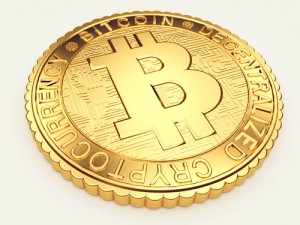The Coming Demise of Bitcoin’s Sole Reign
 Can Bitcoin be dethroned from its tremendous market capitalization advantage? This is a question hotly debated. On one side stand the Bitcoin purists, those who argue that the advantages of being the first mover and of being the highest market capitalization – and thus maintaining the greatest liquidity – provide Bitcoin with a nigh-unassailable economic position. The Nakamoto Institute has published in detail arguments for why Bitcoin is unlikely to be defeated – you can read the excellent discussion and analysis provided by Daniel Krawisz on the Nakamoto Institute Mempool here. I pay him the compliment not because I agree with his argument – the opposite, in fact – but out of scholarly respect; his work is excellent, detailed, and thorough.
Can Bitcoin be dethroned from its tremendous market capitalization advantage? This is a question hotly debated. On one side stand the Bitcoin purists, those who argue that the advantages of being the first mover and of being the highest market capitalization – and thus maintaining the greatest liquidity – provide Bitcoin with a nigh-unassailable economic position. The Nakamoto Institute has published in detail arguments for why Bitcoin is unlikely to be defeated – you can read the excellent discussion and analysis provided by Daniel Krawisz on the Nakamoto Institute Mempool here. I pay him the compliment not because I agree with his argument – the opposite, in fact – but out of scholarly respect; his work is excellent, detailed, and thorough.
But who stands on the other side? Most of those who support altcoins end up intensely mired in the mud-slinging, scam-filled world that the “new penny stocks” have brought upon us all. Rather than call the other side altcoin enthusiasts and bring along with the term all the bottom-dwelling drek that clings to the soon-to-die pump-and-dump altcoin extravaganza, I’ll attempt to coin a term to stand opposed to Bitcoin purist: cryptocurrency pluralist. A cryptocurrency pluralist is someone who would endorse the following statement:
“Given a world in which two or more cryptocurrencies are roughly tied for the highest market capitalization (say within 5 percent of each other), it is likely that, everything else being equal, they will remain mostly tied with each other, and it is plausible that other cryptocurrencies will gain in market capitalization to match them.”
This directly contradicts Daniel’s view, presented in the section titled The Highlander (“There can be only one!”). In it, he presents an analogy, using ACoin and BCoin, which I’ll continue here (changing only the capitalization, for readability). His analogy is:
 “Consider the hypothetical example of an economy that uses exactly two currencies, ACoin and BCoin, which are equally preferred by holders. For whatever reason, ACoin develops a very slight advantage over BCoin. Consequently a few people exchange BCoin for ACoin, thus very slightly increasing the market cap and liquidity of ACoin and slightly decreasing that of BCoin.
“Consider the hypothetical example of an economy that uses exactly two currencies, ACoin and BCoin, which are equally preferred by holders. For whatever reason, ACoin develops a very slight advantage over BCoin. Consequently a few people exchange BCoin for ACoin, thus very slightly increasing the market cap and liquidity of ACoin and slightly decreasing that of BCoin.
Now, in addition to its initial slight advantage over BCoin, ACoin has the advantage of becoming more liquid. As a result, more people will tend to sell BCoin for ACoin. Thus, ACoin’s initial advantage is self-reinforcing, and as the disparity between ACoin and BCoin increases, its superiority becomes more and more evident.”
Daniel’s point is quite clear: Liquidity is the most important aspect of a currency, and, as such, the more liquid currency is the best one. To avoid complicating things, Daniel (and I) assume that the liquidity to market capitalization ratio of all currencies is the same. This is not the case – Dogecoin, for instance, thanks to its very low per-unit price as a result of the massive number of coins, actually has a very high liquidity relative to its market capitalization. Anyway, yes – liquidity is the most important aspect of a currency, but Daniel moves from that (correct) assertion to a view that only holds logically true if it is the ONLY important aspect of a currency, which it is not. Let’s take a second walk through his example.
ACoin and BCoin are equally preferred by holders, and accepted universally (which Daniel’s initial analogy implies but does not directly state). The CEO of BCoin dies, and ACoin develops a slight advantage over it as a result of the market turmoil. However, nothing meaningful has changed – BCoin CEO’s death does not change acceptance of BCoin whatsoever, although the loss in market cap does slightly decrease liquidity. Previously, the currency market was 50-50 between ACoin and BCoin. It is now 50.1-49.9, in ACoin’s favor. In Daniel’s analogy, there appears to be no reason for someone to purchase BCoin instead of ACoin, but that is not the case. ACoin and BCoin are equally useful – they both are accepted everywhere to purchase goods and services (which is in contradiction to the ending of his paragraph, where Daniel states that “a more liquid currency…will be preferable…to spenders because there is simply more that can be bought with it.” That might be the case when two $1 million cryptocurrencies are fighting, but when two currencies control all of global commerce? No.). ACoin is slightly more liquid, and has a slightly higher market cap, but an investor who views this situation carefully quickly sees that it must move in one of two directions. 50.1-49.9 can not be maintained in this hypothetical, because the two currencies are completely identical. Either the currencies will re-enter a state of equilibrium, or equilibrium will break, and one will dominate, as Daniel speculates.
In the analogy, ACoin and BCoin are equally preferred by holders as a group, but that is not the case for each individual holder – many people will have chosen a horse, as it were. Their motivations could drive a return to equilibrium in this case. Imagine you are a large holder of BCoin, with significant other assets: what would you do? Clearly you must act – either sell your BCoin for ACoin, accept your loss, and hope to make a profit as ACoin gains on BCoin (assuming no one interferes), or purchase enough BCoin to raise the price and return it to equilibrium. In other words, you can take a high-risk option, or a low-risk option.
Alternatively, if you are in the position of most financial institutions, and you own an equal amount of ACoin and BCoin, you will have a very obvious answer to the situation: sell ACoin for BCoin to return to equilibrium. It’s an exceedingly low-risk gain for the institution – once the currencies return to 50-50, another destabilizing event is necessary for any problems to occur, and you can slowly return your ACoin and BCoin reserves to equal. In the meantime, you make a pretty nice profit due to the scale on which this occurs. In reality, the divide between the currencies will never be allowed to reach 50.1-49.9 – any price offered other than 1:1 ACoin:BCoin would be considered an arbitrage opportunity, and acted upon immediately in this world. Financial institutions HATE risk, so an opportunity to both reduce their risk by returning the currencies to equilibrium AND to profit will be snapped up instantly. They’re actually able to profit in two ways in this manner, as well: they profit both from selling ACoin for a slight premium and from increasing the value of their BCoin holdings back to equilibrium.
However, for any of this to occur in our non-hypothetical world, Bitcoin would first have to be caught. We’ll discuss how that could occur in a part two.
Thanks for reading!










I think this article imagines some odd behavior from a financial institution. When Ben says “either sell your BCoin for ACoin, accept your loss, and hope to make a profit as ACoin gains on BCoin (assuming no one interferes), or purchase enough BCoin to raise the price and return it to equilibrium. In other words, you can take a high-risk option, or a low-risk option.” I don’t know why selling BCoin and buying ACoin would be considered the high-risk option. It’s the low-risk option because ACoin has the better odds of increasing in value at that point. Of course, it could happen that ACoin and BCoin would go back to an unstable equilibrium, so if you wanted to minimize risk you wouldn’t sell ALL your BCoin. But the low risk option would be to sell a little bit of BCoin and buy a little ACoin and to keep doing that the more out of balance they become.
“If you are in the position of most financial institutions, and you own an equal amount of ACoin and BCoin, you will have a very obvious answer to the situation: sell ACoin for BCoin to return to equilibrium. It’s an exceedingly low-risk gain for the institution” I don’t understand why this would be considered a gain for the institution. They are buying something that they don’t necessarily want just to make the price go up–but the only way they actually gain is if the price of BCoin goes up after they buy as a result of OTHER peoples’ actions. The financial institution did gain by selling ACoin at this point, of course. However, there is no logical reason why to buy BCoin with it. I don’t see how this strategy would necessarily result in a gain for the financial institution in the long run. If they keep buying whichever currency is lower with whatever is higher, would they end up with more of both ACoin and BCoin in the long run? What effect would this have on the total market cap of ACoin and BCoin? I don’t really know but I don’t see any reason to think that this would be a good strategy.
Finally, I want to mention something you said about liquidity. It doesn’t really make sense to say that “Dogecoin, for instance, thanks to its very low per-unit price as a result of the massive number of coins, actually has a very high liquidity relative to its market capitalization.” The number of units available in a currency is not relevant at all here. Really, we want to think about liquidity in terms of some set amount of some OTHER good, like say dollars. Is it easier to dump a million dollars worth of bitcoins or dogecoins on the open market? Clearly, this would be much easier with bitcoins, and therefore Bitcoin is more liquid.
I think that if tree chains and side chains get implemented into Bitcoin successfully where any kind of innovation an altcoin or platform like Ethereum can come up with can be replicated and be interoperable with the blockchain then Bitcoins supremacy is assured. And I say that as a fan of certain alt coins.
First of all, thank you for your contribution, I think that this is a topic that needs to be discussed.
There is no reason to assume that goods that are similiarly liquid trade at a fixed ratio and that there will be equalising forces.
Most fundamentally, we cannot assume that two cryptocurrences are completely identical. That can never be the case.
Even if we disregard the potential differences in the evolution of the supply, people would not be indifferent in the components of their liquidity portfolio. In more mature liquidity stages, there could also be the issue of a unit of account, which will place a penalty on non-UoA cryptocurrencies. Then there is speculation or other nonmonetary applications. Then there are other, softer, factors, like cultural, historical, marketing.